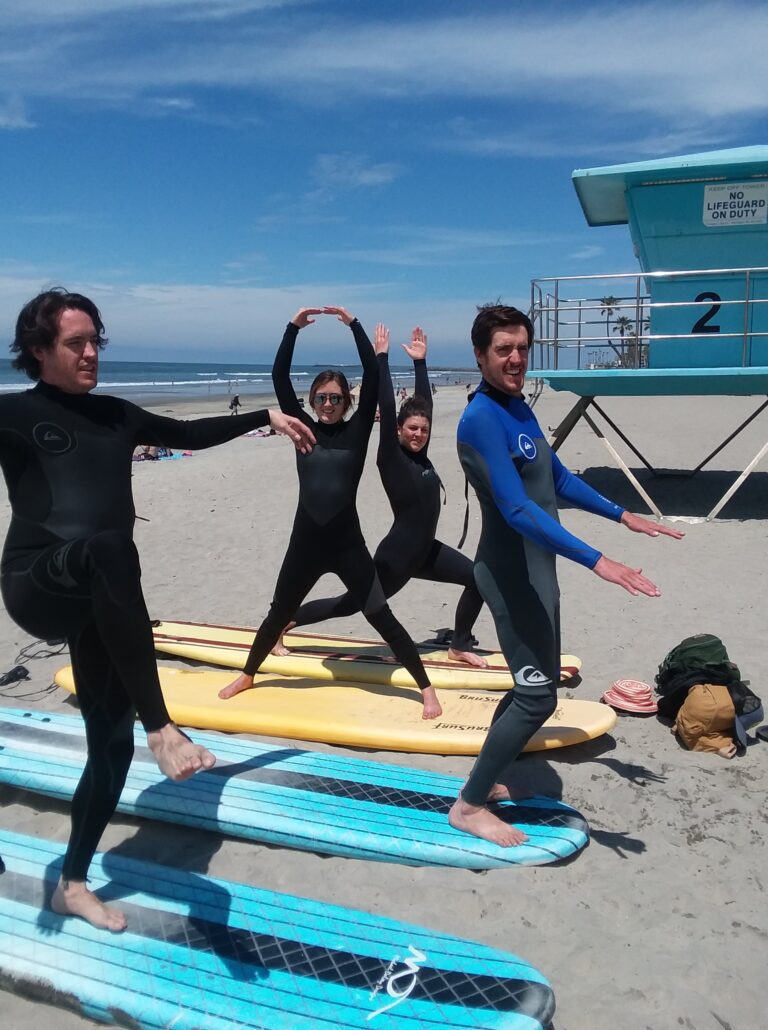How Overweight People Get in Shape to Surf

Welcome to the exhilarating world of surfing! If you’re eager to ride the waves but concerned about your fitness, don’t worry.
Getting in shape for surfing is a journey, and every surfer starts somewhere. For those carrying extra weight, beginning this adventure with a gradual approach to fitness and weight loss can make all the difference.
Let’s explore how you can start shaping up for the surf, step by step.
Start with Gradual Weight Loss
Surfing is a physically demanding sport, and managing your weight can significantly enhance your performance and endurance in the water.
Losing weight gradually is key—it’s healthier, more sustainable, and less daunting. Aiming to lose a few pounds per week through a combination of diet changes and exercise can set you on the right path without overwhelming you.
Introduce a Stretching Routine
Flexibility is crucial in surfing. It helps you paddle more effectively, pop up quickly, and maneuver your board on the waves.
Starting a daily stretching routine can greatly improve your flexibility and reduce the risk of injuries. Simple stretches targeting your legs, back, and arms are great to begin with. Gradually, as your flexibility increases, more advanced stretches can be integrated into your routine.
Begin with Light Weight Training
Strength is another key component of good surfing. Starting a weight routine with light weights helps build the muscle strength needed for paddling and controlling your surfboard.
Focus on exercises that enhance your core strength, as well as your upper and lower body. Exercises like squats, deadlifts, and overhead presses, performed with light weights, are excellent for building the foundational strength every surfer needs.
Kickstart Your Aerobic Routine
Cardiovascular fitness is vital for endurance, which you’ll need plenty of to paddle around and catch waves. Starting an aerobic routine can be as simple as walking, biking, or swimming—activities that are particularly effective for overweight individuals as they are easier on the joints while still providing excellent cardiovascular benefits.
If you prefer indoor activities, any aerobic equipment at the gym, such as treadmills, ellipticals, or stationary bikes, will do the job. Aim to incorporate 20 to 30 minutes of aerobic exercise into your daily routine, gradually increasing the intensity and duration as your fitness improves.
Consistency Is Key
The most important part of getting in shape to surf is consistency.
Stick with your routines, gradually pushing yourself further as your fitness level increases. Remember, every bit of movement counts, and each day you train is a step closer to becoming a proficient surfer.
Join Us at Oceanside Surf Lessons
At Oceanside Surf Lessons, we support surfers of all sizes and fitness levels. Our experienced instructors are here to help you with tailored advice on getting in shape and improving your surfing skills. Whether you’re just starting your fitness journey or ready to hit the waves, we have a lesson for you.
Start your surfing and fitness journey today! Book your lessons at Oceanside, and let’s ride the wave to a healthier, more active lifestyle together. See you in the water!
See the Surf Books for Sale Page for Many Learn to Surf and Get Fit Options
Buy some books to help See on Amazon E-Books and Paperbacks (click the Book below)
Get Fit to Surf, Health, Fitness, Nutrition
Surf Instruction Beginner to Advanced
3 Week Plan. Lose Weight, Build Strength, Flexibility, and Aerobic Fitness
How to Lose 30 Pounds and Get Fit
#surflessonsinoceansdie, #overweightpeoplecansurf, #overweightpeoplegetinshape, #surfboardsforoverweightpeople